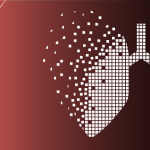
Sarepta Therapeutics, Inc., a leader in precision genetic medicine for rare diseases, announced positive results from its interim analysis of muscle biopsy endpoints comparing casimersen treatment to placebo in the ESSENCE study.
ESSENCE is a global, randomized double-blind, placebo-controlled Phase 3 study evaluating the efficacy and safety of casimersen and golodirsen in patients amenable to skipping exons 45 or 53, respectively.
After soliciting feedback from the FDA, Sarepta conducted an interim analysis for levels of dystrophin protein expression in those patients who are amenable to exon 45 skipping to determine the potential for a New Drug Application (NDA) filing based on dystrophin as a surrogate endpoint. With these results, the Company intends to work toward submission of an NDA for casimersen in the middle of 2019. News release
“We are pleased to see that the anticipated exon skipping after treatment resulted in a statistically significant mean increase of dystrophin protein, as measured by western blot*.” -Professor Francesco Muntoni, University College London
“This is the third exon-skipping agent to have shown a statistically significant increase in dystrophin production, and reinforces our confidence in the exon-skipping approach for treating Duchenne patients with amenable mutations.” -Professor Francesco Muntoni, University College London
“The casimersen results and submission of our application for golodirsen earlier this year further validate our RNA* research engine. If golodirsen and casimersen are approved, nearly a third of the boys and young men living with DMD in the United States could benefit from our RNA therapies. We continue to advance toward our ultimate goal of profoundly improving the lives of as many patients around the world with DMD as possible.” -Doug Ingram, Sarepta Therapeutics’ president and chief executive officer
ESSENCE study
ESSENCE is a global Phase 3 study evaluating the efficacy and safety of casimersen and golodirsen in patients amenable to skipping exons 45 or 53, respectively. Golodirsen and casimersen rely on the same approach than Exondys 51.
Positive results
The interim analysis found a statistically significant increase in dystrophin production in casimersen-treated participants compared to baseline and placebo. Golodirsen and casimersen rely on the same approach than Exondys 51.
Submitting to the FDA
Based on positive results, the company intends to schedule a pre-NDA (New Drug Submission) meeting with FDA (Food and Drug Administration) US and plans to submit an NDA for casimersen in the middle of 2019.
Key findings from the interim analysis include:
- Dystrophin protein increased to 1.736%. By comparison, treatment with Exondys 51 was shown to result in dystrophin levels of 0.93% of normal after 180 weeks.
- A statistically significant difference in the mean change from baseline to week 48 in dystrophin protein was observed between the casimersen-treated arm compared to the placebo arm.
- A statistically significant positive correlation between exon 45 skipping and dystrophin production was observed.
- The study is ongoing and remains blinded to collect additional efficacy and safety data.
Sarepta exon skipping therapy
- Exondys 51 > skipping exon 51 = 13% DMD patients
- Golodirsen > skipping exon 53 = 8% DMD patients
- Casimersen > skipping exon 45 = 8% DMD patients
For a better understanding
* The western blot is a widely used analytical technique in molecular biology, immunogenetics and other molecular biology disciplines to detect specific proteins in a sample of tissue homogenate or extract.
* Ribonucleic acid (RNA) is a polymeric molecule essential in various biological roles in coding, decoding, regulation and expression of genes. RNA and DNA are nucleic acids, and, along with lipids, proteins and carbohydrates, constitute the four major macromolecules essential for all known forms of life. Like DNA, RNA is assembled as a chain of nucleotides, but unlike DNA it is more often found in nature as a single-strand folded onto itself, rather than a paired double-strand.
Duchenne muscular dystrophy (DMD) is caused by a lack of dystrophin
Dystrophin is a protein found in muscle cells that, while present in minimal amounts, is crucial in strengthening and protecting muscle fibers. A devastating and incurable muscle-wasting disease, DMD is associated with specific errors in the gene that codes for dystrophin, a protein that plays a critical structural role in muscle fiber function. Progressive muscle weakness in the lower limb’s spreads to the arms, neck and other areas of the body. The condition is universally fatal, and death usually occurs before the age of 30 generally due to respiratory or cardiac failure.
RNA-targeted therapeutics are powerful tools
Humans have about 22,000 genes, which contain the blueprints for producing proteins that perform essential functions in the body.
Proteins are molecular workhorses involved in almost every function in our bodies, and defective proteins often result in disease. More specifically, some diseases may be caused by the over-production of one or more proteins, while other diseases are caused by protein deficiencies.
Proteins are produced in cells, where genes in the DNA are “transcribed” into RNA templates, which are then processed and “translated” into proteins by the cellular machinery.
RNA-targeted therapeutics direct the cellular machinery involved in making proteins. These drugs can be designed to increase or decrease the production of a protein involved in a disease.
By working at the genetic level, RNA-targeted therapeutics are powerful tools with the potential to address diseases that otherwise could not be treated with traditional small molecule or biologic drugs.
What is Exon Skipping
Mutations in the dystrophin gene are one cause of DMD. Most commonly, one or more exons (a portion of a gene) are missing, and the remaining exons don’t fit together correctly. (Think of a zipper that doesn’t work correctly, because teeth are missing.)
Because of this error, cells cannot make the dystrophin protein that muscles need to work properly. Without it, muscle cells become damaged and, over time, are replaced with scar tissue and fat.
To fix the broken genetic machinery, scientists are developing drugs that skip over parts that contain missing or defective exons. In this way, the machine can produce a less defective dystrophin protein, which may improve muscle function in children with exon mutations.
Sarepta investigational therapies in the ESSENCE study use a technique referred to as exon skipping. Skipping a specific exon next to the mutation is intended to allow the body to make a shortened form of the dystrophin protein.



